NCERT Solutions for Class 9 Maths chapter 8 Exercise 8.2 - Quadrilaterals
Class 9Hey, are you a class 9 Student and Looking for Ways to Download NCERT Solutions for Class 9 Maths chapter 8 Exercise 8.2? If Yes then you are at the right place.
Here we have listed Class 9 maths chapter 8 exercise 8.2 solutions in PDF that is prepared by Kota’s top IITian’s Faculties by keeping Simplicity in mind.
If you want to score high in your class 9 Maths Exam then it is very important for you to have a good knowledge of all the important topics, so to learn and practice those topics you can use eSaral NCERT Solutions.
In this article, we have listed NCERT Solutions for Class 9 Maths chapter 8 Exercise 8.2 that you can download to start your preparations anytime.
India's Best Exam Preparation for Class 9th - Download Now
So, without wasting more time Let’s start.
Download The PDF of NCERT Solutions for Class 9 Maths chapter 8 Exercise 8.2 "Quadrilaterals"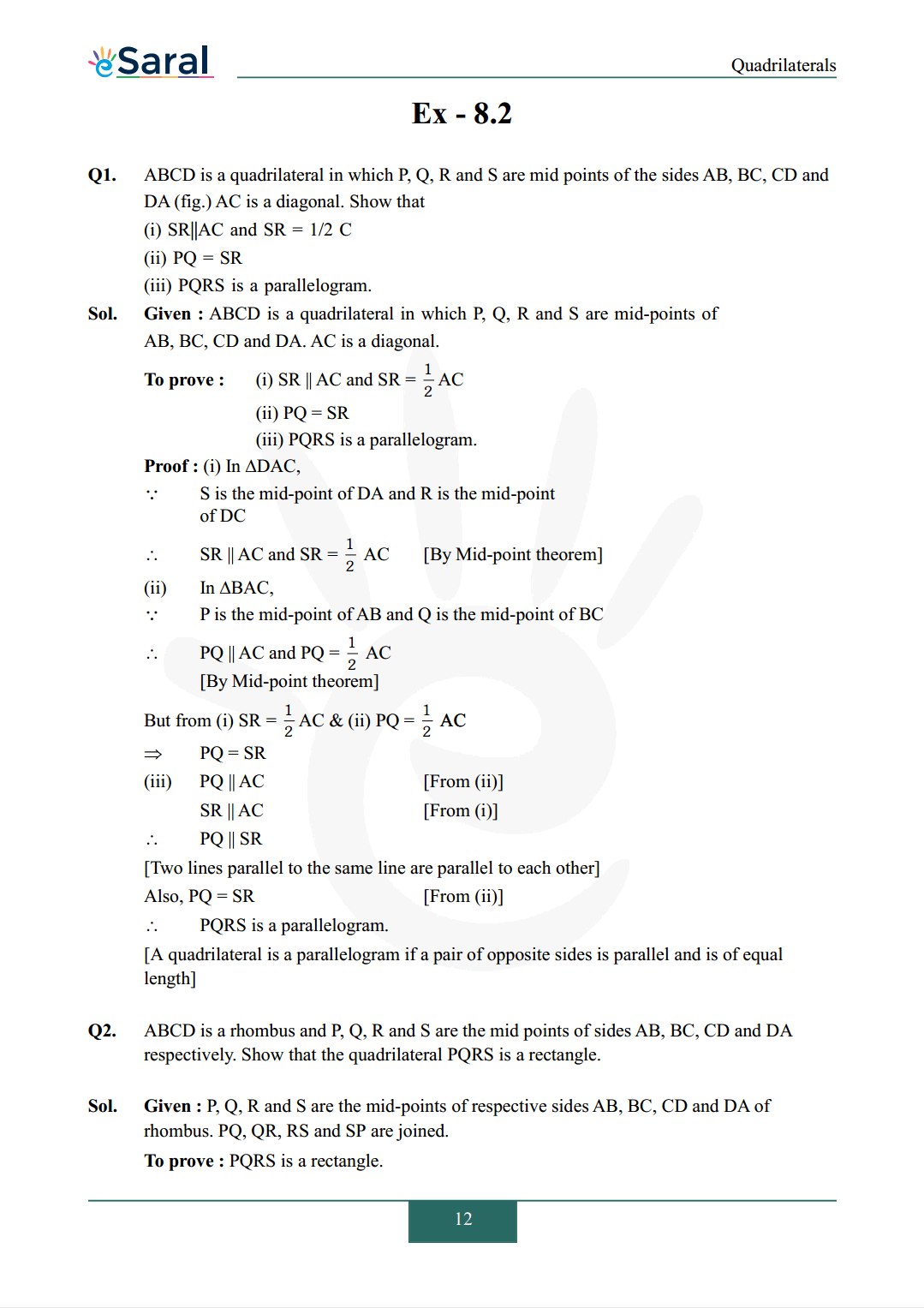
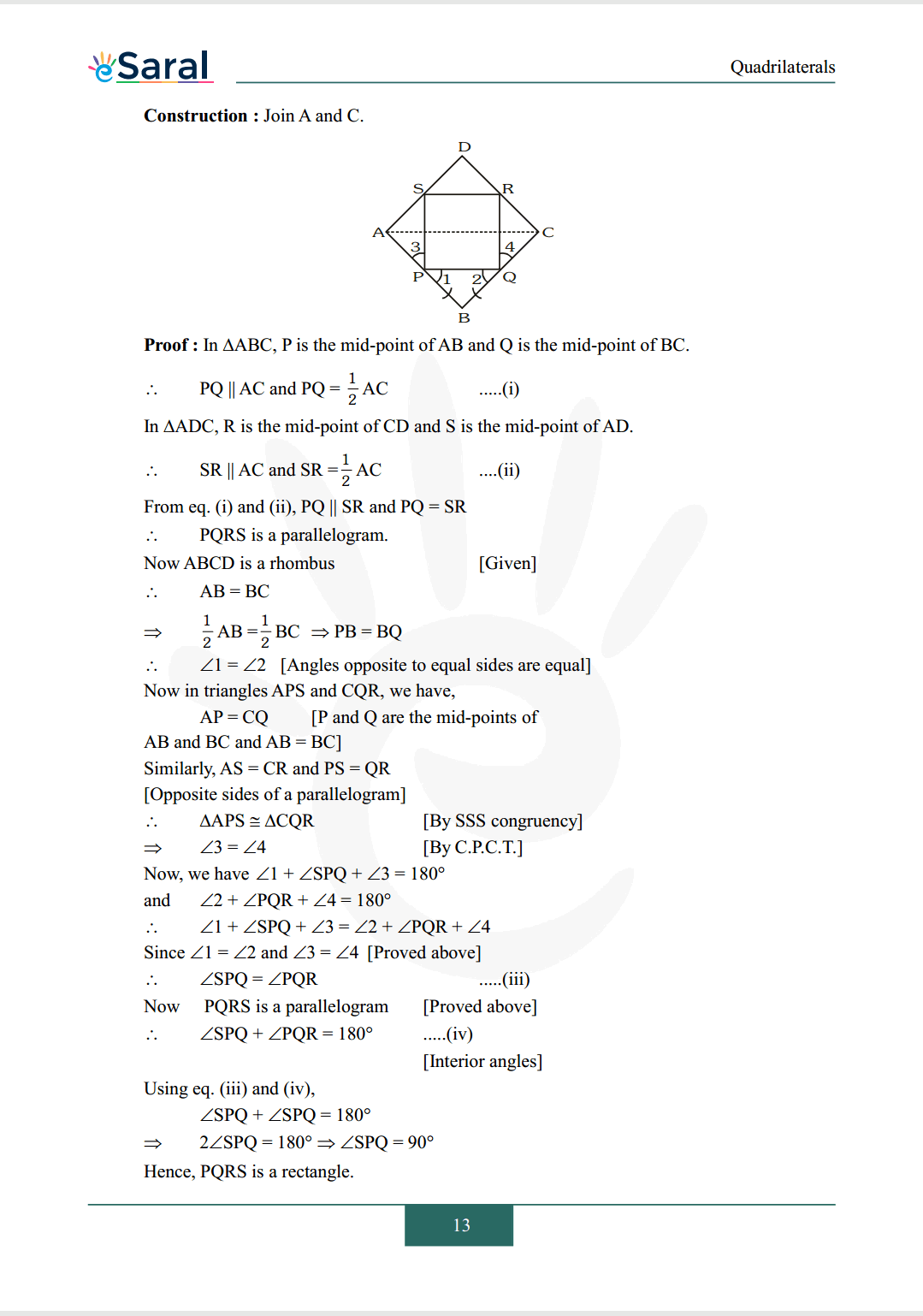
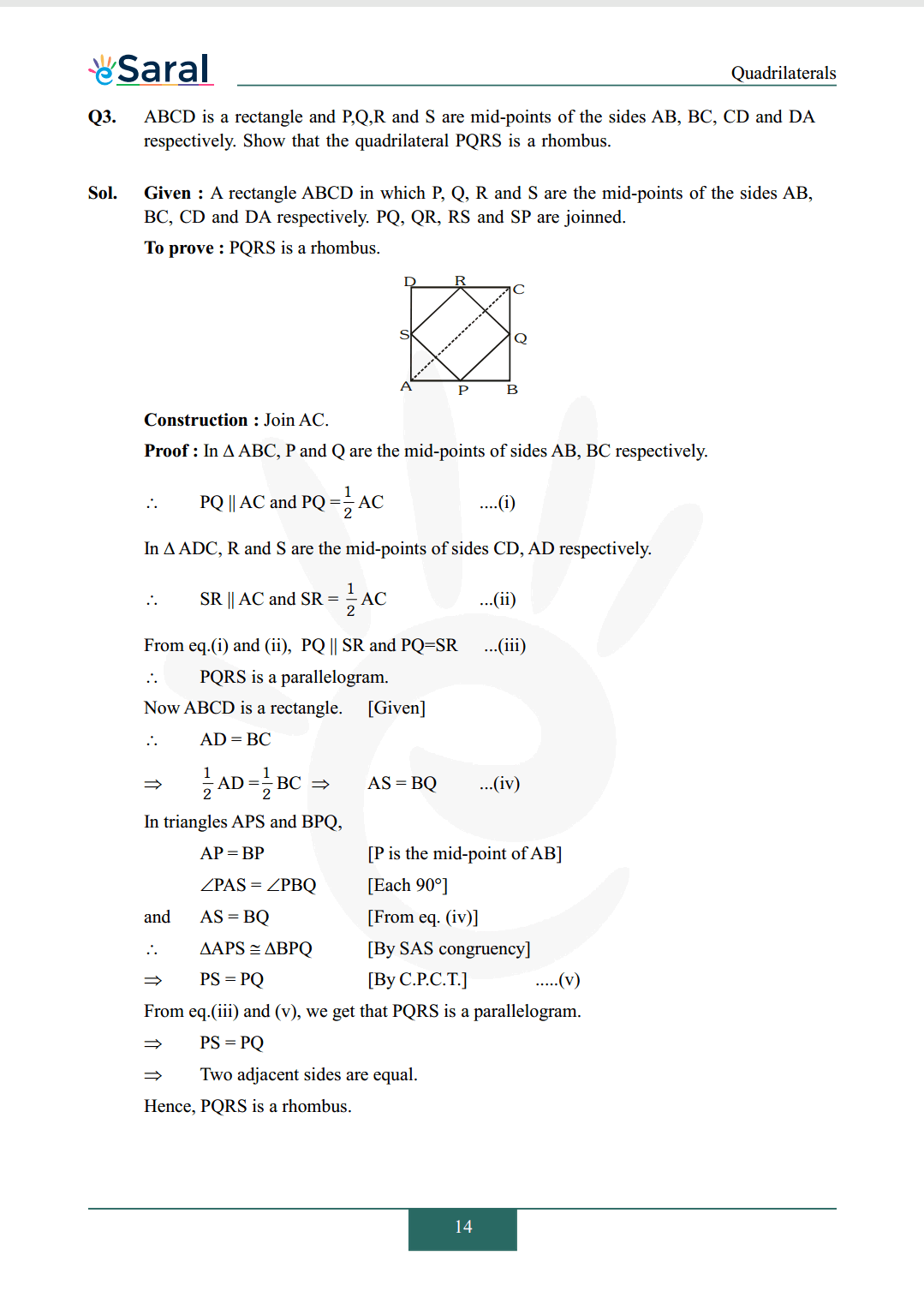
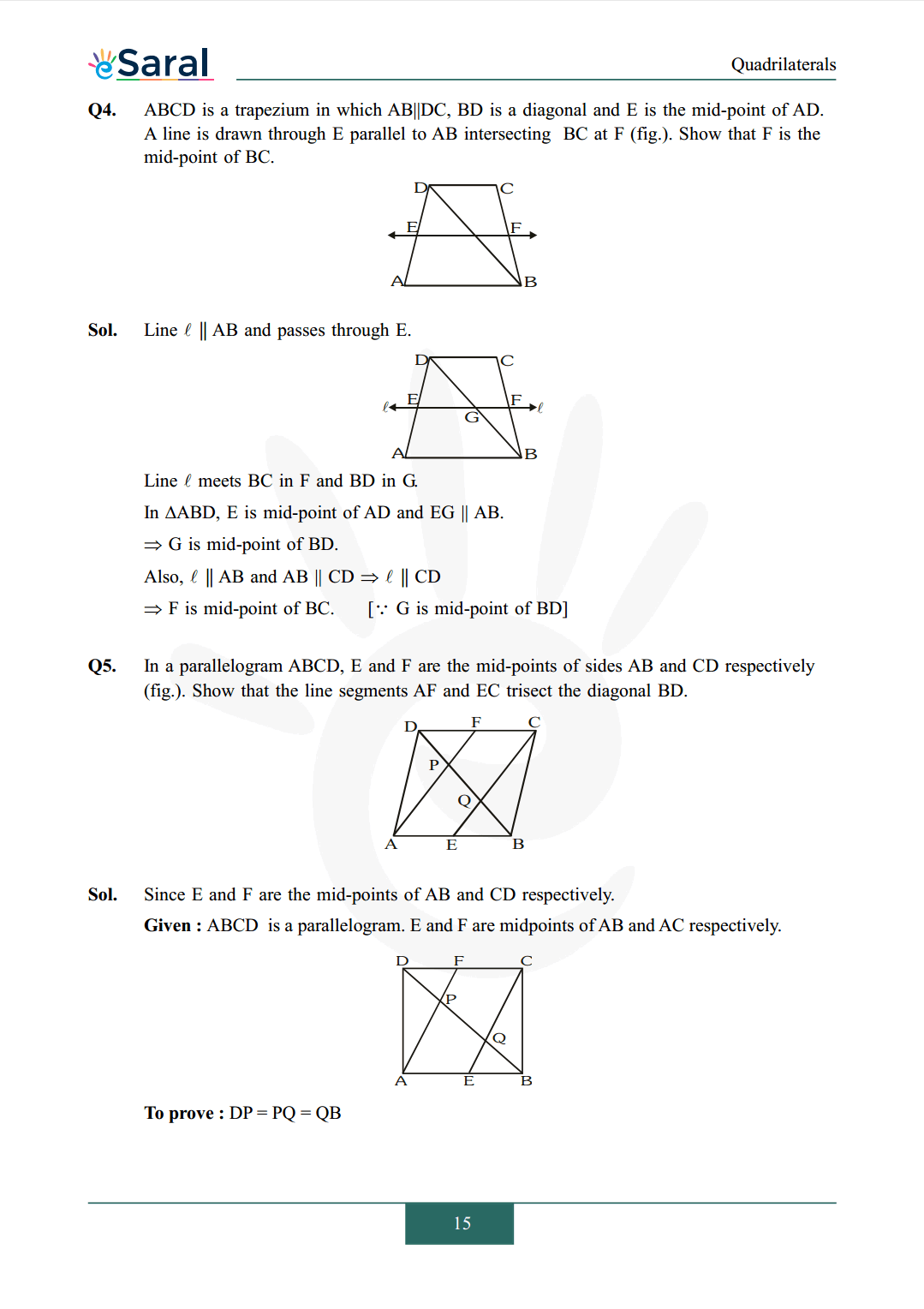
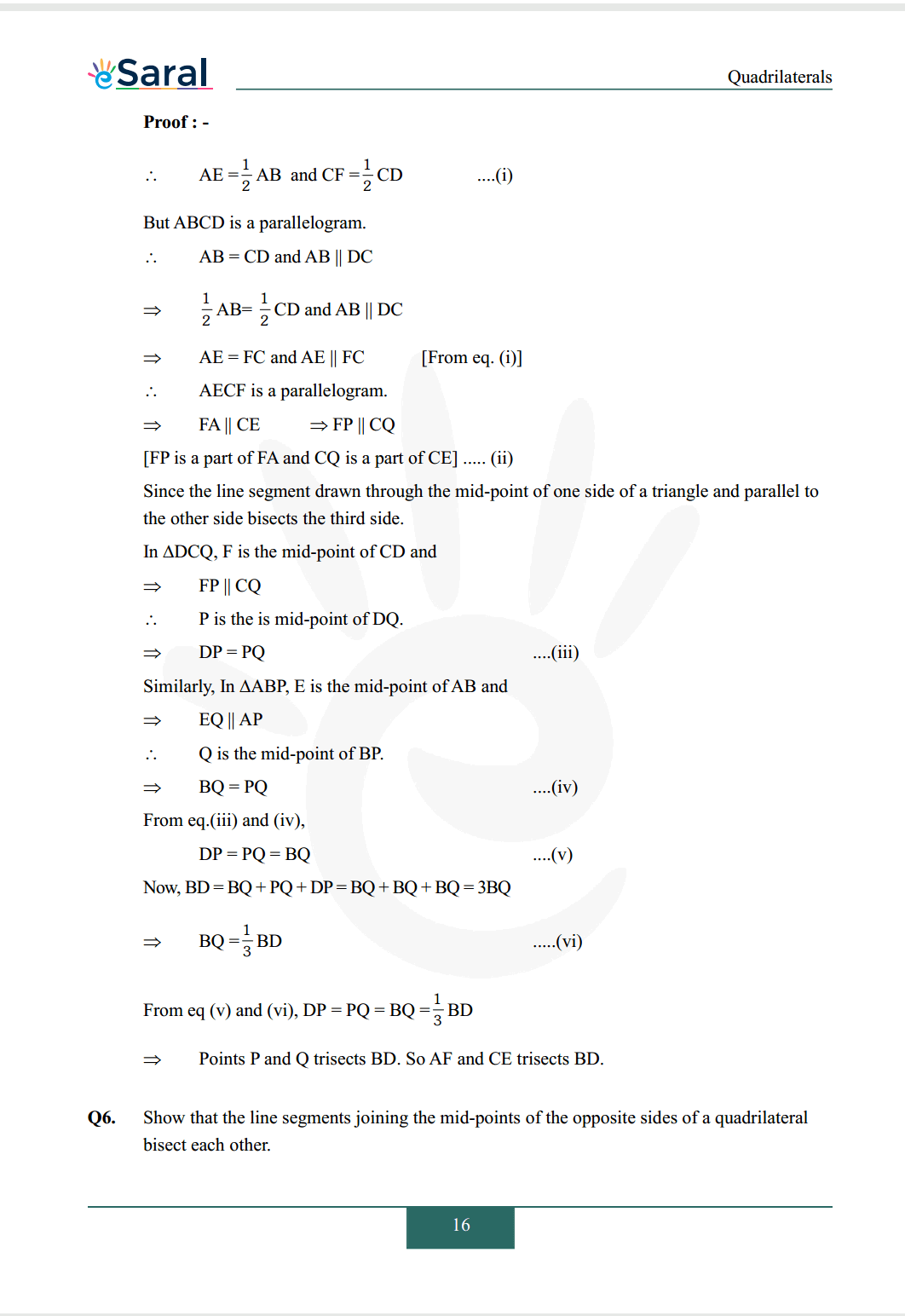
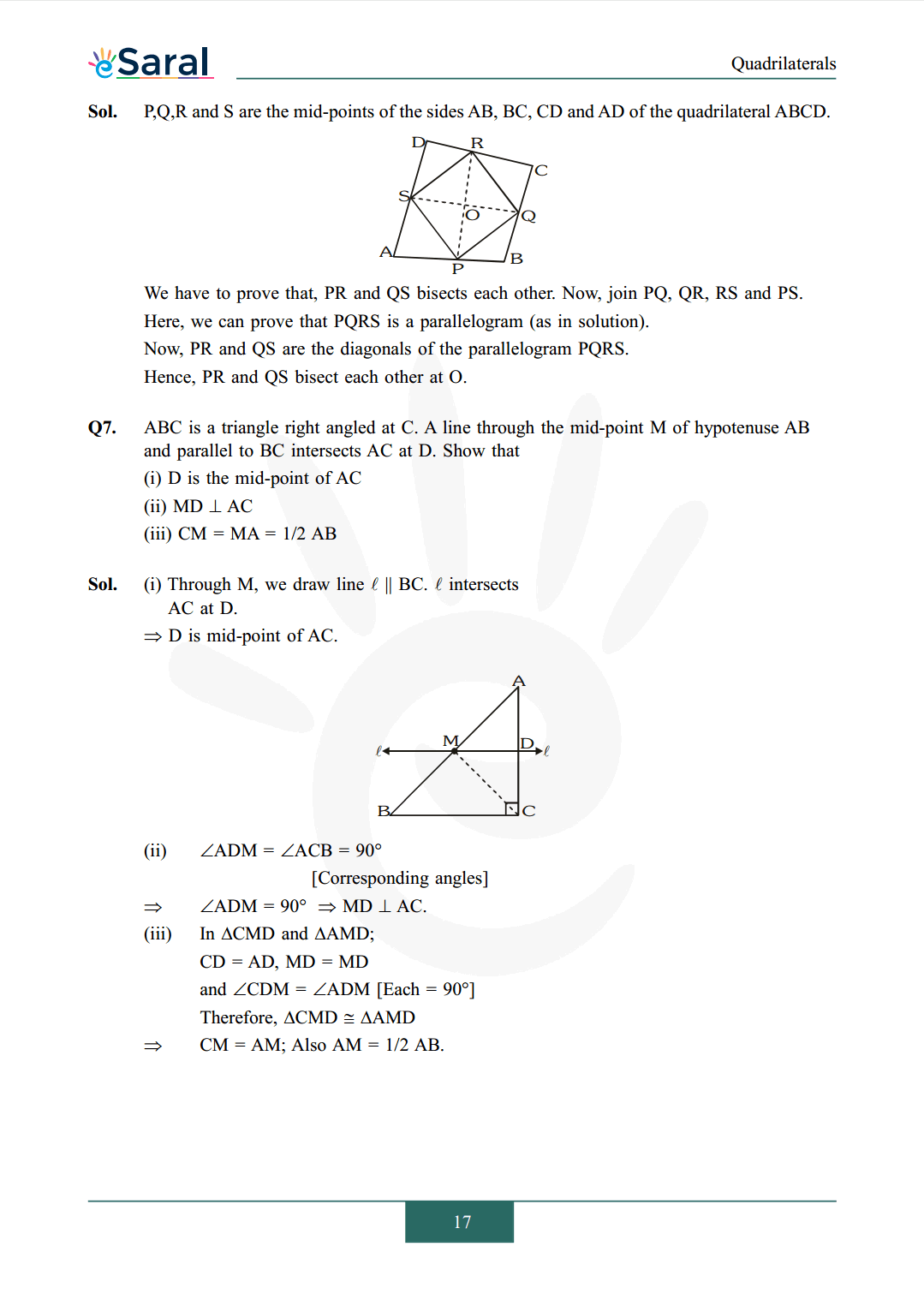
So, that’s all from this article. I hope you enjoyed this post. If you found this article helpful then please share it with other students.
India's Best Exam Preparation for Class 9th - Download Now
All Questions of Chapter 8 Exercise 8.2
Once you complete the chapter 8 then you can revise Ex. 8.2 by solving following questions
Q1. $\quad \mathrm{ABCD}$ is a quadrilateral in which $\mathrm{P}, \mathrm{Q}, \mathrm{R}$ and $\mathrm{S}$ are mid points of the sides $\mathrm{AB}, \mathrm{BC}, \mathrm{CD}$ and DA (fig.) $\mathrm{AC}$ is a diagonal. Show that
(i) $\mathrm{SR} \| \mathrm{AC}$ and $\mathrm{SR}=1 / 2 \mathrm{C}$
(ii) $\mathrm{PQ}=\mathrm{SR}$
(iii) PQRS is a parallelogram.
Q2. $\mathrm{ABCD}$ is a rhombus and $\mathrm{P}, \mathrm{Q}, \mathrm{R}$ and $\mathrm{S}$ are the mid points of sides $\mathrm{AB}, \mathrm{BC}, \mathrm{CD}$ and $\mathrm{DA}$ respectively. Show that the quadrilateral PQRS is a rectangle.
Q3. $\mathrm{ABCD}$ is a rectangle and $\mathrm{P}, \mathrm{Q}, \mathrm{R}$ and $\mathrm{S}$ are mid-points of the sides $\mathrm{AB}, \mathrm{BC}, \mathrm{CD}$ and $\mathrm{DA}$ respectively. Show that the quadrilateral PQRS is a rhombus.
Q4. $\mathrm{ABCD}$ is a trapezium in which $\mathrm{AB} \| \mathrm{DC}, \mathrm{BD}$ is a diagonal and $\mathrm{E}$ is the mid-point of $\mathrm{AD}$. A line is drawn through $\mathrm{E}$ parallel to $\mathrm{AB}$ intersecting $\mathrm{BC}$ at $\mathrm{F}$ (fig.). Show that $\mathrm{F}$ is the mid-point of $\mathrm{BC}$. 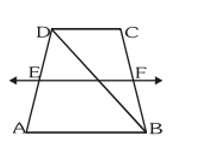
Q5. In a parallelogram $\mathrm{ABCD}, \mathrm{E}$ and $\mathrm{F}$ are the mid-points of sides $\mathrm{AB}$ and $\mathrm{CD}$ respectively (fig.). Show that the line segments $\mathrm{AF}$ and EC trisect the diagonal $\mathrm{BD}$. 
Q6. Show that the line segments joining the mid-points of the opposite sides of a quadrilateral bisect each other.
Q7. $\mathrm{ABC}$ is a triangle right angled at $\mathrm{C}$. A line through the mid-point $\mathrm{M}$ of hypotenuse $\mathrm{AB}$ and parallel to BC intersects $\mathrm{AC}$ at $\mathrm{D}$. Show that
(i) $\mathrm{D}$ is the mid-point of $\mathrm{AC}$
(ii) $\mathrm{MD} \perp \mathrm{AC}$
(iii) $\mathrm{CM}=\mathrm{MA}=1 / 2 \mathrm{AB}$
Also Read,
India's Best Exam Preparation for Class 9th - Download Now
Download Class 9 NCERT Maths Book PDF
Download Class 9 NCERT Maths Exemplar PDF
Download Complete Solutions for Class 9 Maths chapter 8
Download Class 9 Maths Chapter 7 Exercise 7.1 Solutions Free
Download Class 9 Maths Chapter 7 Exercise 7.2 Solutions Free
Download Class 9 Maths Chapter 7 Exercise 7.3 Solutions Free
Download Class 9 Maths Chapter 7 Exercise 7.4 Solutions Free
If you have any Confusion related to NCERT Solutions for Class 9 Maths chapter 8 Exercise 8.2 then feel free to ask in the comments section down below.
To watch Free Learning Videos on Class 9 by Kota’s top Faculties Install the eSaral App
